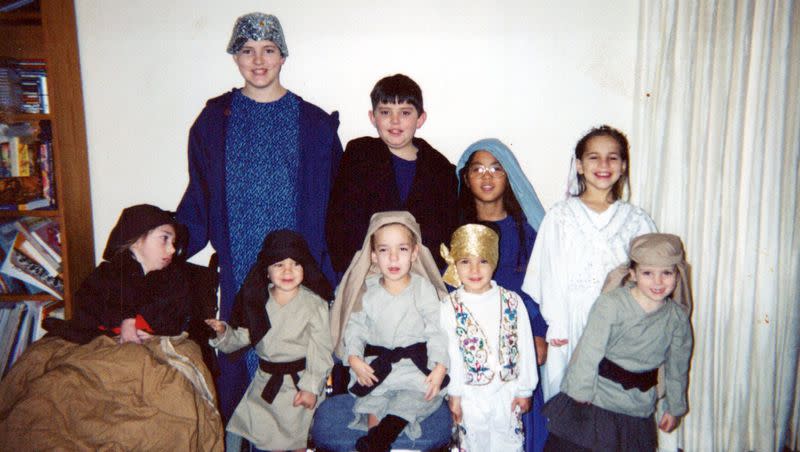Perspective: The Christmas I forgot one of my kids

One year, a number of years ago, my husband and I were up late on Christmas Eve wrapping gifts and putting them in kid piles when I gasped. We had forgotten a child. Not go-to-Paris-and-leave-a-child-home-alone forgot, but we forgot to shop for one of the middle children.
That was also the year I started using a spreadsheet. (And now I know why Santa checks his list twice!)
Before the spreadsheet, it was more like fly-by-the-seat-of-my-pants-and-hope-it-all-works-out. That particular year, I remember grabbing things at various times as I did normal shopping. That child would think that’s funny, this one is into dolls, that one outgrew his shoes — again. I did not have a system for tracking, however, as I found out Christmas Eve. Luckily, we had some extra gifts we had purchased “just in case,” and we always had plenty of candy and snacks, so it all worked out, but that was a heart-stopping moment I did not care to repeat.
As our family grew to 25 children (20 at home at our peak), the gift-giving became more complex, as you might imagine. We have tried a variety of things when it comes to gifts. At the beginning, I’d classify our gift-giving as random and largely utilitarian: if the kids needed anything, starting about October, I would just save those ideas for Christmas. Socks, undies, school supplies — all Christmas gifts. But two things happened: the kids liked the boxes and wrapping paper better than the gifts and, frankly, even I thought the gifts were boring.
I wanted the children to have the experience of choosing and giving gifts for each other, so, for a couple of years, we took all of the kids to the dollar store and had them pick presents for their eight siblings and mom and dad. Upside? No one really cared that toys broke two days in. But let’s do the math: nine kids each buying 10 presents = AT LEAST 90 presents. Um, yeah. We quit that before the family got any larger.
Related
So, then we went to drawing names of just one family member to give a gift to. When we started, the idea was we would lovingly and carefully handmake gifts. We actually did that for a number of years, but it added to my load a LOT. For example, kids would want to see something or make a no-sew fleece blanket or a simple stuffed teddy bear. Very sweet, but then multiply times 10, 15 or 20 kids who wanted/needed help, and you’ll understand why we eventually gave that up. We still do the Secret Santa exchange, but now “homemade” is not a requirement.
Around the same time we started the secret Santa gift exchange, we also started giving three gifts à la the three gifts from the Wise Men. We had three categories to begin with: mind, body, spirit, then added a fourth for Santa gifts — fun. That worked for us for the remaining years we still had kids at home. It kept the number of gifts manageable, it kept the gifting relatively equal and, it helped me not forget kids. Also — I used a spreadsheet.
I’ve become a somewhat obsessive spreadsheet checker, and sometimes keeping all the balls in the air at the same time can be not only difficult but time-consuming and draining. I’ve had to be intentional about participating in family games, in taking photos and in remembering the reason for the season: a tiny baby in a manger.
Here’s what I’ve learned: you can create joyful moments that turn into joyful memories without killing yourself. They don’t have to take a lot of money or even a lot of time. They do take presence, so I try to put away the phone and the to-do list and be there. We often add something new each year, recipes, for example, but we also don’t do everything every year. For example, I have not sewn matching pajama pants for about four years. It was an annual tradition I have given up.
I try to be intentional. Be still. Be there. (Even if I still check the spreadsheet after the kids and grandkids have gone to bed.)
Holly Richardson is the editor of Utah Policy.

